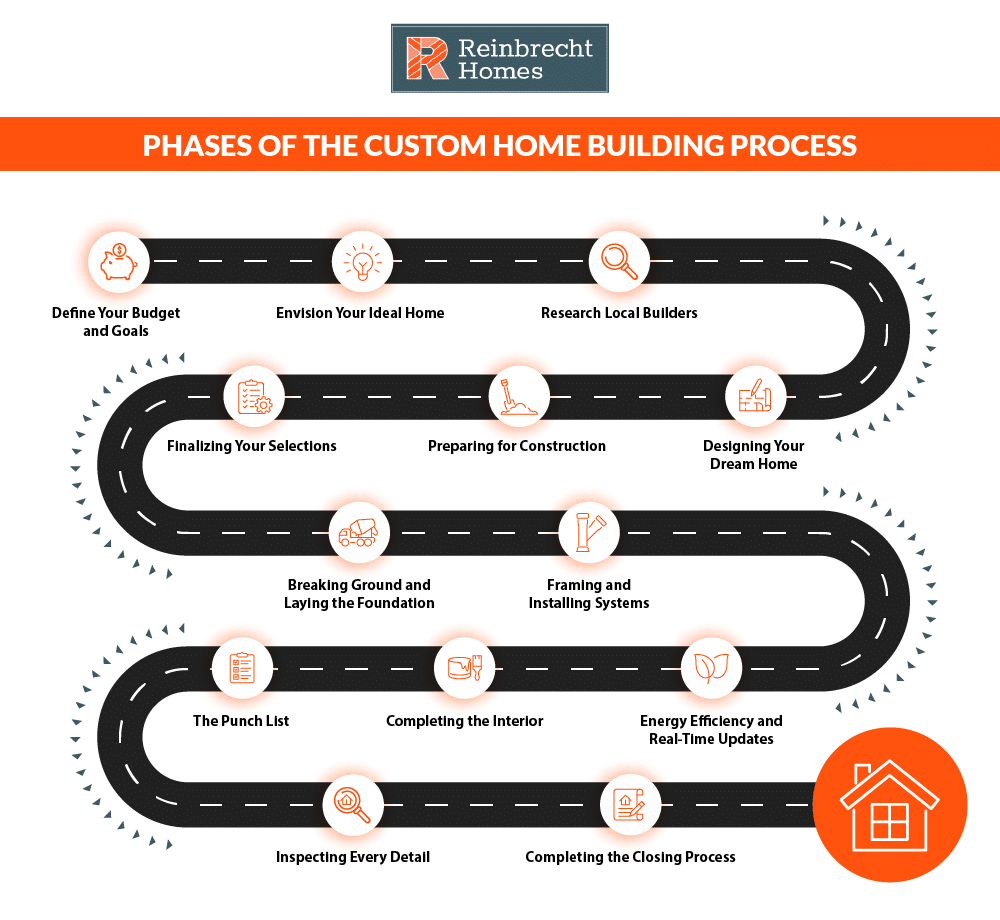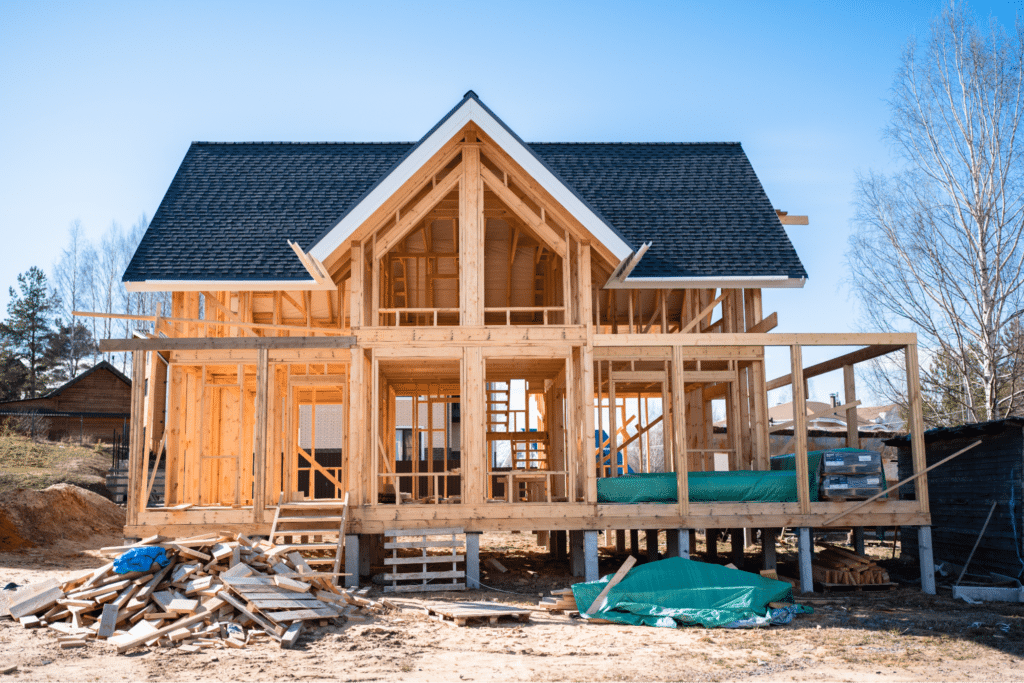Building your dream home is a significant milestone that begins with thoughtful planning and a clear vision. Whether your goal is to create a picturesque residence in Southern Indiana or a suburban oasis in Eastern Illinois, understanding the custom home building process transforms a complex task into a manageable journey. Leading reputable builders like Reinbrecht Homes make this journey smoother by emphasizing transparency, attention to detail, and energy-efficient practices.
In this article, you’ll learn about the essential phases—from initial research and consultation to construction and the final walkthrough—arming you with the knowledge to make informed decisions throughout the process.
Understanding the Custom Home Building Journey
Custom home building goes far beyond assembling a structure; it’s about crafting a space that reflects your lifestyle and aspirations. Whether you choose a semi-custom option or a fully custom design, knowing the key steps can ease your mind and help you communicate effectively with your builder. Let’s explore the phases that take you from initial ideas to moving into a home built just for you.


Initial Research and Preparation
The journey begins with research and preparation, where you define your vision and set realistic parameters.
Define Your Budget and Goals
Start by reviewing your finances, considering costs such as land, permits, construction, and contingencies. Research local home prices in Southern Indiana and Eastern Illinois to gauge a realistic budget. Simultaneously, determine the essential features of your ideal home—number of bedrooms, layouts, and energy-efficient options like solar panels or advanced insulation. If you want a variety of design ideas, consider reviewing different floor plans.
Envision Your Ideal Home
Outline your vision by asking:
- What type of layout and design suits your lifestyle?
- Which spaces are non-negotiable, such as a home office or media room?
- How important are sustainability features to you?
Deciding between semi-custom homes that modify an existing plan or a fully custom design built from scratch helps guide your conversations with potential builders. If you’re curious about move-in-ready options, browse available homes for immediate occupancy. If you’d like to see examples of completed projects, browse our Project Gallery for inspiration.
Research Local Builders
Identify builders with a strong local presence and proven customer satisfaction. Look for transparency in communication and expertise in local building codes. Organize your findings—notes on pricing, builder portfolios, and financing options—in one document to streamline initial consultations. If you’re exploring community locations, check out Reinbrecht Homes neighborhoods to see a range of development possibilities.
Initial Consultation and Planning
After your research, schedule a consultation with your chosen builder. This meeting sets the foundation for your project.
Setting the Stage for Success
During the consultation, discuss your goals, budget, and vision. This meeting is the time to review whether a semi-custom floor plan or a fully custom design best meets your needs. Clear communication in this phase ensures that your builder understands your expectations, which helps identify potential challenges early. For further information on how to get rewarded when you refer friends or family, check out our Homebuilding Referral Program.
Discussing Financing Options
Clarify details regarding payment schedules, loan terms, and contingencies. Many builders offer construction loan assistance or work with trusted lending partners to make financing smoother. If you want to explore different financing solutions, Home Financing with Reinbrecht Homes can simplify your budget planning. Understanding these financial details upfront prevents surprises later on.
Establishing Communication Channels
Agree on how updates and decisions will be shared during the project. Consistent communication—via scheduled calls or project management tools—ensures that you remain informed and confident as the project progresses. Tools like Reinbrecht’s Buildertrend tool help homeowners monitor the progress of the project with a shared calendar and photos.
Design and Pre-Construction Preparation
With a well-defined vision and plan, the design and pre-construction phase turns ideas into detailed plans.
Designing Your Dream Home
Work closely with architects and designers to finalize floor plans and visualizations. Whether refining an existing layout or designing from scratch, focus on incorporating essential details and energy-efficient features that suit your local climate. Streamlining choices ensures that your design meets both aesthetic and practical needs.
Preparing for Construction
During pre-construction, the builder secures permits, coordinates with surveyors and engineers, and handles lot grading and utility connections. Finalize financing and review cost estimates to ensure the design remains within your budget. This phase confirms that your project complies with local construction codes and is primed for the build.
Finalizing Your Selections
This step involves selecting key finishes and fixtures. Interactive design centers or selection sessions help choose everything from cabinetry to lighting. Prioritize energy efficiency for benefits that extend well into your future occupancy.
The Construction Phase
This phase transforms plans into a physical structure through organized, sequential work.
Breaking Ground and Laying the Foundation
Construction begins with site preparation—clearing and grading the land—and laying a solid foundation, be it a slab, crawlspace, or basement. Inspections ensure that the foundation meets safety and structural standards.
Framing and Installing Systems
Framing creates the home’s skeleton, while the “rough-in” phase installs essential systems such as electrical, plumbing, and HVAC. Modern builders integrate energy-efficient practices during framing to optimize insulation and reduce waste.
Energy Efficiency and Real-Time Updates
Incorporate energy-efficient elements during construction, like proper sealing and insulated windows. Many builders now employ tools for real-time project updates, allowing you to monitor progress and address any concerns promptly.
Final Touches and Inspections
With the primary structure complete, the focus shifts to finishing details and rigorous inspections.
Completing the Interior
Final stages include the installation of flooring, cabinetry, fixtures, and a final coat of paint. As each room takes shape, inspections confirm that important features—from plumbing to electrical work—meet all regulations and quality standards.
The Punch List
A final punch list identifies any minor adjustments needed before moving in. This collaborative review ensures that any remaining issues are addressed promptly and that your home is delivered exactly as envisioned.
Final Walkthrough and Closing
The final walkthrough is your chance to review every detail before ownership is officially transferred.
Inspecting Every Detail
Together with your builder, inspect areas like countertops, cabinetry, and appliance functionality. Verify that all agreed-upon changes and punch list items are complete. This step also familiarizes you with operating systems, like your thermostat and security panel.
Completing the Closing Process
Once satisfied with the walkthrough, finalize the closing paperwork. You’ll receive important documents such as warranties and details about any post-construction support. This process marks the official transition to ownership and your exciting new beginning.
Navigating Permits, Regulations, and Sustainable Practices
Building a custom home involves navigating a myriad of permits and regulatory requirements. It is important for homeowners to be aware of the local building codes and necessary permits that ensure a safe and compliant construction process.
Understanding Local Permitting Laws
Local regulations vary widely across counties and municipalities. Homeowners must submit comprehensive plans to local authorities to obtain the proper permits. This ensures that the construction adheres to zoning laws, environmental requirements, and building safety standards. Familiarizing yourself with these prerequisites early on can prevent delays and additional costs later in the process.
Sustainability and Environmental Considerations
Today’s custom homes are not just built for aesthetic appeal—they are designed to be sustainable and energy efficient. Incorporating green technology, such as high-performance insulation, rainwater harvesting systems, and solar panels, not only reduces environmental impact but also leads to long-term cost savings. Many local governments offer incentives for energy-efficient practices. Researching these benefits and integrating them into your design underscores the modern commitment to sustainability.
The Role of Inspections
Regular inspections during the permit and construction phase ensure that your home meets all local and state regulations. Inspections provide an opportunity to address any potential issues before they escalate. It is a critical step that reassures both the builder and the homeowner that the project is on track and conforms with safety standards. Engaging with inspectors and understanding their feedback will keep the project compliant and high in quality.
Post-Move-In Tips for Homeowners
Moving into your custom home is just the start. Maintaining its quality is key to long-term satisfaction.
Establish a Maintenance Routine
Regularly check systems like HVAC, plumbing, and insulation. Simple tasks—changing filters, checking for leaks, and scheduling annual servicing—can prevent larger issues and help preserve energy efficiency.
Organize Important Documents
Keep warranties, service records, and maintenance schedules in a well-organized digital or physical file. This helps streamline future repairs or upgrades.
Stay Connected with Your Builder
Many builders continue to offer support after move-in. Maintain a relationship with your builder for tips on upgrades or seasonal maintenance. Ongoing communication can ensure that any future modifications or renovations align smoothly with your home’s design. Additionally, consider reviewing the home buyers warranty to understand the scope of your coverage and any relevant service timelines.
Tips for Building a Custom Home Successfully

Success in custom home building comes from a combination of planning, communication, and flexibility.
Communicate Consistently
Regularly update and engage with your builder to avoid misunderstandings. Clear dialogue ensures that your vision remains on track.
Prioritize Energy Efficiency and Detail
Plan early for energy-efficient features and pay attention to design details. These choices result in a more sustainable and comfortable home that meets both your aesthetic and functional needs.
Stick to Your Budget and Schedule
Monitor expenses and timelines closely. Allow for some flexibility in planning to accommodate unexpected delays or design changes. Keeping a close eye on your budget and schedule helps minimize stress and ensures that the project remains aligned with your original vision.
Celebrate Milestones
Acknowledging key milestones—from the foundation to finishing touches—can keep you motivated during the lengthy construction process. Celebrating each stage not only recognizes the hard work involved but also helps reinforce the progress being made toward your dream home.
Embrace the Final Chapter of Your Custom Home Journey
Embarking on the custom home building process allows you to create a space that truly reflects your unique lifestyle and vision. From the initial planning stages and detailed consultations to designing, constructing, and finally moving in, each phase is critical to bringing your dream to life. By partnering with a trusted builder who emphasizes transparency, energy efficiency, and quality craftsmanship, you ensure that every decision is informed and every detail meets your high standards.
Ready to get started? Contact Reinbrecht Homes for a personalized consultation and explore options that fit your unique vision in Southern Indiana or Eastern Illinois. We also encourage you to visit our blog for more information about homebuilding tips, trends, and neighborhood spotlights.




